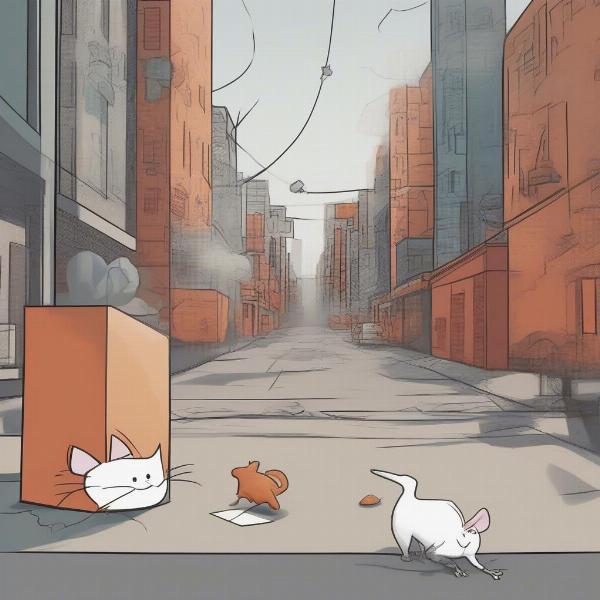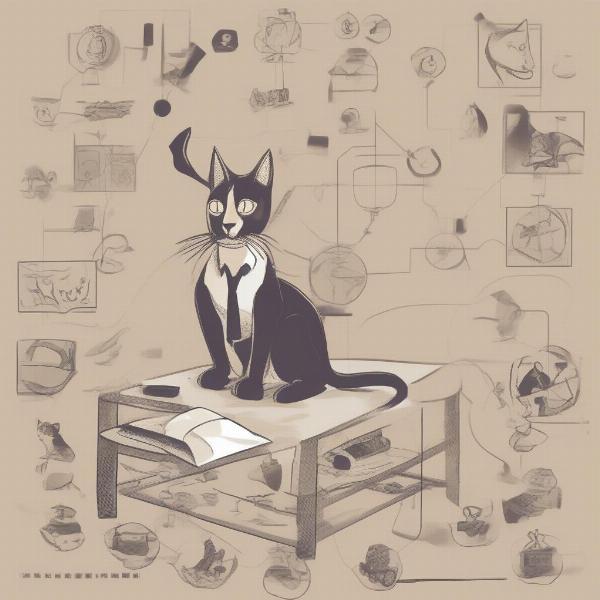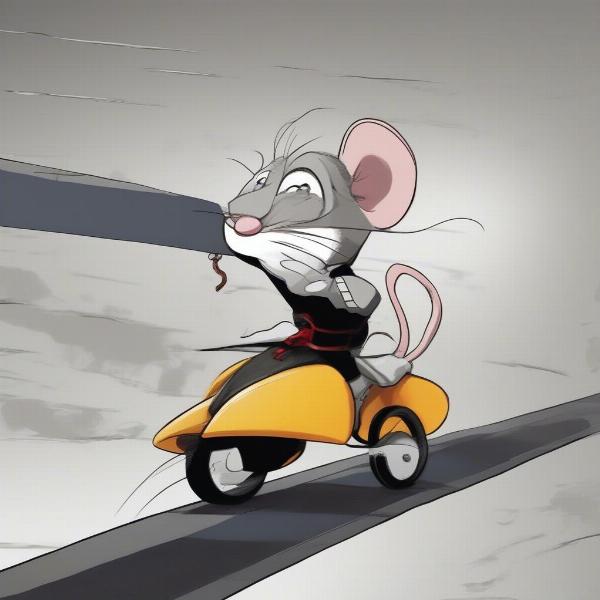A Game Of Cat And Mouse Can Be Painful, a phrase that perfectly encapsulates the psychological tug-of-war present in many video games. At supremeduelist.blog, we understand the thrill and the frustration that come with these intricate chases, and we’re diving deep into what makes them so compelling – and sometimes so agonizing. This analysis will unpack the core mechanics, tactics, and meta-level thinking that define these experiences, from stealth games to asymmetrical multiplayer battles.
This exploration will focus not just on the obvious thrill of the chase, but also on the subtler elements of strategy, anticipation, and psychological warfare that make this game dynamic so fascinating. We’ll examine how different game genres utilize the ‘cat and mouse’ dynamic, and offer insights on how to both effectively hunt and expertly evade. Prepare to sharpen your skills and deepen your appreciation for the tense beauty of pursuit and escape.
The Anatomy of a Cat and Mouse Game: More Than Just Running
What exactly makes a game feel like a tense pursuit between a cat and a mouse? It’s more than simply one player chasing another. The core elements often include a power imbalance, a dynamic environment, and the constant pressure of uncertainty. A cat, typically stronger and faster, pursues a mouse, smaller and more agile. This creates a dynamic where strategic decision-making and environmental awareness are just as critical as raw speed or power. The “mouse” relies on cunning, knowledge of the map, and the ability to outmaneuver rather than overpower the “cat”.
The best examples of these mechanics use tension as a tool. This tension isn’t just in knowing you are being pursued; it’s also in the constant risk of detection, the need for split-second decisions, and the psychological strain of prolonged periods of heightened awareness. Games like Dead by Daylight and Evolve masterfully capture this tension by having vastly different playstyles based on whether you are the hunter or the hunted. These games often involve specific tools, abilities, and map knowledge that play a crucial role in how this balance of power is managed.
 strategic-cat-mouse-gameplay
strategic-cat-mouse-gameplay
Key Elements Defining the Dynamic:
- Power Imbalance: One side has clear advantages, while the other relies on tactics.
- Dynamic Environment: Map elements such as cover, traps, or alternative routes.
- Psychological Warfare: The cat’s need to predict, and the mouse’s need to deceive.
- Tension and Uncertainty: Always being on the edge, not knowing what is around the corner.
Genre Variations: How Different Games Play the Same Tune
While the basic concept remains the same, different game genres interpret the “cat and mouse” dynamic in unique ways. Stealth games, like Metal Gear Solid or Splinter Cell, are classic examples where the player, as the ‘mouse,’ uses darkness, quiet movement, and disguises to evade powerful enemies – the ‘cat’. These games emphasize patience and risk management, with failure resulting in detection and increased tension.
Asymmetrical multiplayer games, such as Friday the 13th or Prop Hunt, take this concept into the multiplayer arena. In Friday the 13th, one player controls Jason Voorhees, a relentless and powerful hunter, while the other players try to survive as camp counselors using their wits and environment to escape or delay Jason. Prop Hunt flips the script, with one team being the ‘hunter’ searching for the ‘mice’, who are disguised as various objects, adding humor and deception into the mix. These games often provide the cat with unique tools and the mice with ways to trick or escape. The core mechanic of pursuit and evasion remains, but the context changes dramatically.
Examples in Gaming:
- Stealth Games: Metal Gear Solid, Splinter Cell – Focus on evasion and calculated risks.
- Asymmetrical Multiplayer: Dead by Daylight, Friday the 13th – Emphasize the cat-and-mouse dynamic with role differentiation.
- Puzzle Games: Portal, The Witness – Use logical thinking and environmental manipulation to solve problems and ‘evade’ game mechanics.
- Competitive Racing: Mario Kart, Need for Speed – The ‘chase’ is a constant fight for position.
Strategies for the Cat: The Art of the Hunt
Being the “cat” isn’t always easy. Effective hunters must understand more than just pursuit – they need to be able to anticipate, adapt and overwhelm their prey. This often includes knowing the map layout intimately, understanding the behavior patterns of their target, and using strategic abilities at crucial moments. Being too aggressive can lead to making rash decisions, while being too passive can allow the prey to escape.
Effective hunting involves using a combination of patience and aggression. Sometimes waiting for the right moment to strike is more effective than relentless pursuit. Using bait, traps, or psychological tricks can also be very effective in manipulating the mouse. For example, in Dead by Daylight, the killer might pretend to be going in one direction to bait a survivor into thinking they’re safe, only to circle back and catch them unaware. This strategic element is as crucial to victory as raw skill or power. “A successful hunter always knows the terrain and the mind of their prey”, says game strategist, Professor Anya Sharma, “anticipation and adaptation are key to closing the gap”.
 effective-hunter-tactics
effective-hunter-tactics
Tips for Effective Hunting:
- Know the Map: Understanding layout allows for shortcuts and ambush points.
- Predict Movement: Look for patterns in your target’s behavior.
- Strategic Ability Usage: Use powers at the opportune moment.
- Patience: Sometimes it’s better to wait than to rush.
Tactics for the Mouse: Surviving the Chase
Being the ‘mouse’ is equally challenging, requiring more than just agility and speed. The key is understanding the map and using it to your advantage. This often includes knowing where the best hiding spots are, knowing escape routes and using the environment to create separation. Unlike the hunter, who has the luxury of forcing the confrontation, the mouse’s strategy is primarily reactive and requires a calm under pressure to make tactical decisions.
The mouse also often uses stealth and deception to evade the hunter. This could include hiding in plain sight, using misdirection, or setting traps. Think of a survivor in Dead By Daylight using a flashlight to blind the killer and create a window for escape. The psychological element is often more apparent on the ‘mouse’s side. Keeping a level head and avoiding panic, while making well-informed choices under pressure, is essential. “The mouse must always be thinking two steps ahead,” states professional gamer, David Chen, “it’s about using the environment and your mind as your greatest weapons”.
 agile-mouse-evasion
agile-mouse-evasion
Tips for Successful Evasion:
- Master the Map: Know hiding places and escape routes.
- Stealth and Deception: Utilize tricks to create opportunities.
- Adaptability: Adjust your strategy based on the hunter’s tactics.
- Remain Calm: Clear thinking is crucial in high-pressure situations.
The Psychological Impact: Beyond Mechanics
The game of cat and mouse isn’t just about mechanical skill – it’s also about the psychological impact it has on players. The constant pressure of being hunted or the thrill of the hunt creates a heightened sense of awareness and can be incredibly engaging. This stress can be rewarding, generating an adrenaline rush and a sense of satisfaction when you outwit your pursuer, or successfully catch your prey. The feeling of near misses, narrow escapes, and the triumph of a win can be immensely satisfying.
However, it’s also important to acknowledge the frustration this mechanic can create. Being hunted repeatedly can be exhausting and demoralizing, and feeling powerless can be deeply unpleasant. This is particularly noticeable in asymmetric games, where the power imbalance can sometimes feel overwhelming. Balancing the thrill of the chase with the potential for frustration is crucial to a successful cat-and-mouse experience.
Conclusion: The Painful Pleasure of the Chase
A game of cat and mouse can be painful, but the tension, strategy, and psychological elements create a unique and compelling experience. Whether you are the hunter or the hunted, understanding the mechanics, developing effective strategies, and keeping a level head is crucial to success. Here at supremeduelist.blog, we hope this analysis helps you better appreciate the intricate dynamics of pursuit and evasion, and that these insights enhance your gaming experience. Now, go forth and dominate – whether you’re chasing or escaping! Check back regularly for more in-depth analyses and tactical advice for your favorite games.
Leave a Reply